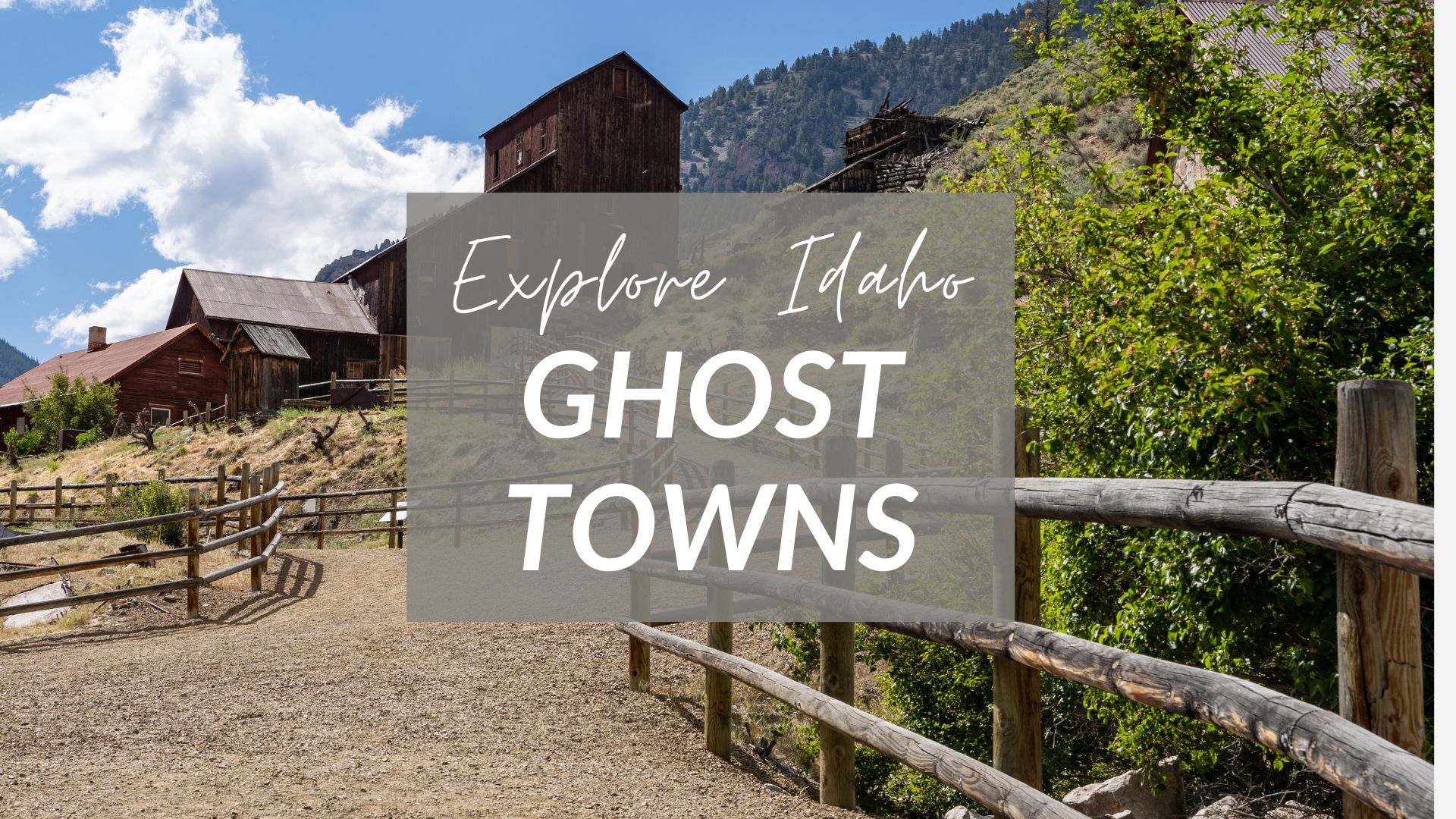
As we head into October, there’s no better time to explore Idaho’s rich historical landscape and discover its ghost towns. These once-thriving communities, now abandoned, offer a glimpse into the past while highlighting opportunities for the future.
For anyone considering Idaho’s real estate market or looking for scenic areas with historical charm, these ghost towns offer both inspiration and a sense of adventure. Let’s take a look at some of Idaho’s most intriguing ghost towns that blend history with scenic beauty.
Atlanta: A Gold Rush Relic
Atlanta, located in central Idaho, flourished during the gold rush of the 1860s. Although it became a ghost town in the early 20th century, its well-preserved buildings and rich history continue to attract visitors. Real estate near Atlanta offers opportunities to develop properties with a rustic, historical flair, appealing to those looking for a retreat in the Idaho wilderness.
Bayhorse: Preserving a Silver Mining Past
Tucked away in central Idaho, Bayhorse was once a bustling silver mining camp. Founded in the 1870s, the town prospered before being abandoned in the early 20th century. Today, Bayhorse’s well-preserved ruins provide a scenic backdrop for visitors. The town’s mining history and stunning natural surroundings make it an attractive location for potential development focused on tourism, outdoor recreation, or preservation of Idaho’s mining legacy.
Burke: A Faded Railroad Town
Located in northern Idaho, Burke was once a vital railroad hub for the region’s mining industry. Its decline followed the downturn of the mining boom in the early 20th century. Today, visitors can explore its crumbling railroad infrastructure, reflecting on the town’s storied past. Burke offers an interesting opportunity for real estate development in regions that balance historical significance with the potential for future growth, possibly as a historical attraction or a rustic getaway.
Bonanza: Hidden in the Sawtooths
Deep in the Sawtooth Mountains, Bonanza was a bustling town during the late 19th century gold rush. While it has long been abandoned, remnants of its mining operations remain, drawing history enthusiasts and hikers alike. For those considering real estate near the Sawtooths, Bonanza presents an opportunity to reimagine ghost towns as part of Idaho’s natural tourism offerings, highlighting both history and the great outdoors.
Cinnabar: Eastern Idaho’s Mining Relic
Once a thriving silver mining town on the banks of Henrys Fork, Cinnabar has faded into history, leaving behind historic buildings and mining relics. With its remote location and scenic views, Cinnabar is another prime candidate for real estate investors interested in blending Idaho’s heritage with outdoor tourism.
Chesterfield: A Frontier Settlement
Chesterfield, founded by Mormon pioneers in the 1880s, thrived as a farming community before its population declined in the 20th century. The well-preserved historic buildings and wide-open plains make Chesterfield a location rich in potential for historical preservation or real estate developments that embrace the area’s pioneer spirit.
Custer: Boom, Bust, and Abandonment
Custer, located in central Idaho, was once a bustling mining town during the gold rush era of the 1870s. Its rapid growth was followed by a steep decline, and by the 1930s, it had become a ghost town. Visitors can now walk among abandoned mine shafts and rusting machinery, soaking in the town’s rich history. For those considering Idaho’s real estate opportunities, Custer’s location offers an example of how historical areas can become popular for tourists or even serve as locations for eco-tourism or outdoor recreation projects.
Murray: The Coeur d’Alene River’s Gold Rush Hub
Founded in the 1880s, Murray was once a bustling community on the Coeur d’Alene River during the gold rush. Its decline left behind well-preserved buildings and a wealth of history. This area could inspire real estate developments focused on historical tourism or vacation properties along the scenic riverbanks.
Roosevelt: The Forgotten Logging Town
Located in northern Idaho, Roosevelt was once a thriving logging town in the early 20th century. Abandoned after the decline of the timber industry, the town’s remnants still stand as a testament to its past. For those looking at real estate opportunities, Roosevelt offers an example of how forgotten logging towns can be revitalized for modern tourism or outdoor recreation.
Silver City: A Glimpse of the Old West
Nestled in the Owyhee Mountains, Silver City is one of Idaho’s best-preserved ghost towns. Founded in the 1860s during the Idaho gold rush, Silver City once housed over 2,500 residents and a booming mining industry. Today, visitors can explore its well-preserved historic buildings, including saloons, hotels, and homes frozen in time. For real estate enthusiasts, Silver City offers a window into the state’s heritage, where older structures can inspire modern preservation efforts or creative redevelopment ideas.
Yellow Pine: A Logging Legacy
Tucked in central Idaho, Yellow Pine was once a thriving logging town in the early 20th century. While it’s largely abandoned today, its scenic beauty and historical significance make it an attractive location for potential development or tourism-focused investments, appealing to those looking to connect with Idaho’s logging past.
Why Visit Idaho’s Ghost Towns?
For October, Idaho’s ghost towns provide a uniquely atmospheric adventure. These quiet, historic locations are not only scenic but also tell stories of the perseverance, hopes, and challenges of early settlers and miners. Many of these towns are easy to explore, with trails, historical markers, and even guided tours available at some locations.
Whether you are looking to immerse yourself in history, get some amazing photos, or just experience a different side of Idaho, these ghost towns offer an unforgettable journey. This October, embrace the haunted history and rugged beauty of Idaho’s ghost towns as you uncover the state’s fascinating past.
If you’re planning your October adventure to any of these ghost towns, be sure to check travel conditions and the accessibility of these remote locations, as some may require off-road vehicles or seasonal access.
Happy exploring, and may your journey through Idaho’s ghost towns be both haunting and awe-inspiring!
